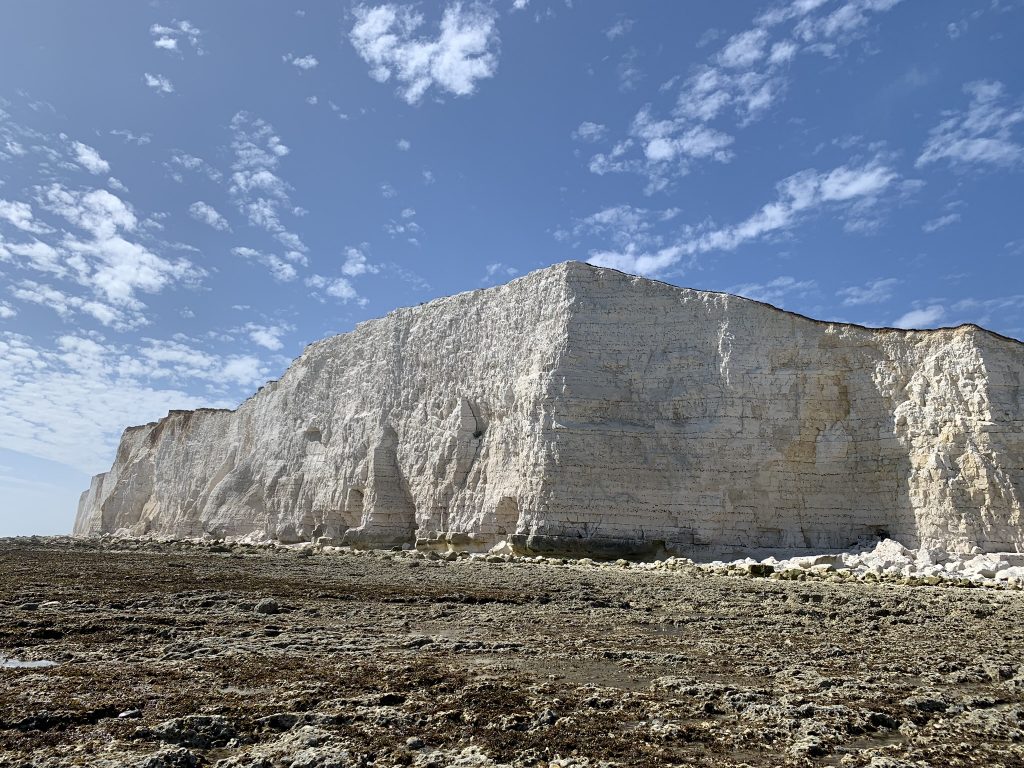
Introduction
Seaford is a small coastal town in East Sussex and home to 22,000 people. Immediately southeast of the town is the Seaford Head Nature Reserve, an area of stunning scenery and wildlife, and fringed along its seaward edge by vertical Chalk cliffs. This coastal area is perhaps best known for the famous Seven Sisters cliffs that continue along the coast towards Beachy Head in the southeast. The cliff sequence at Seaford Head and Seven Sisters is separated by the River Cuckmere, which follows the Cuckmere Valley from its inland source. From the river mouth the Chalk cliffs continue northwest for 2 miles beneath Seaford.
The Chalk cliffs and foreshore at Seaford Head reveal a complex marine environment dating from the Late Cretaceous epoch, 89-86 million years ago. Fossils occur commonly throughout the Chalk, in particular echinoids, sponges, bivalves, and other benthic fauna that inhabited the prehistoric seafloor at the time.
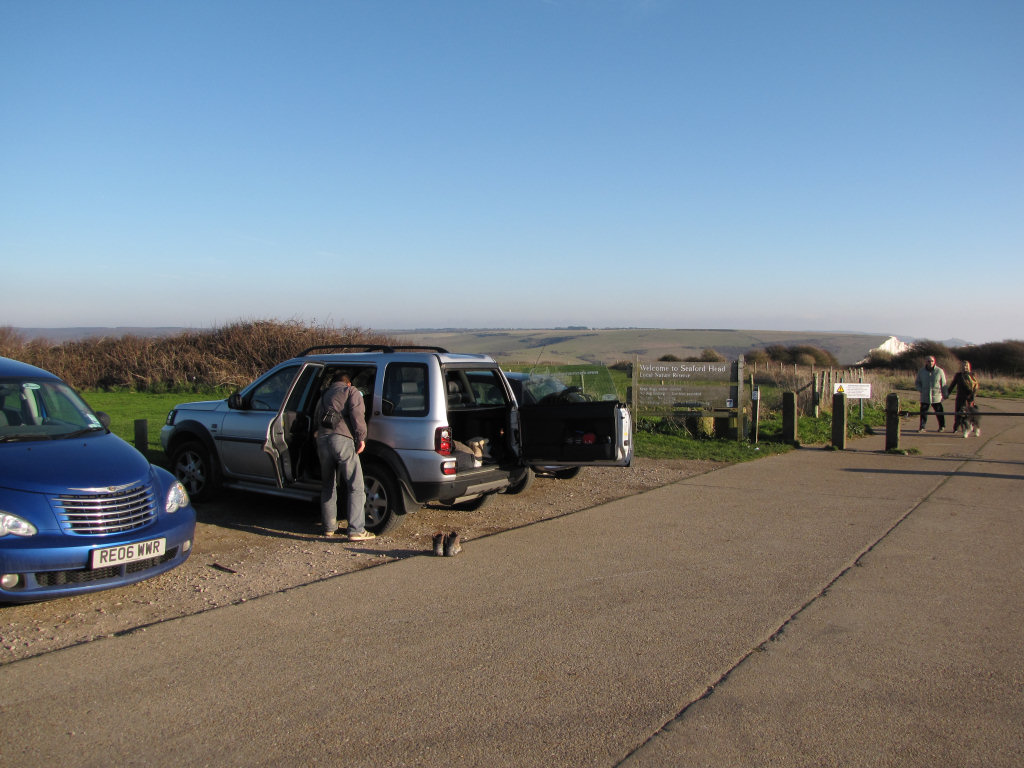
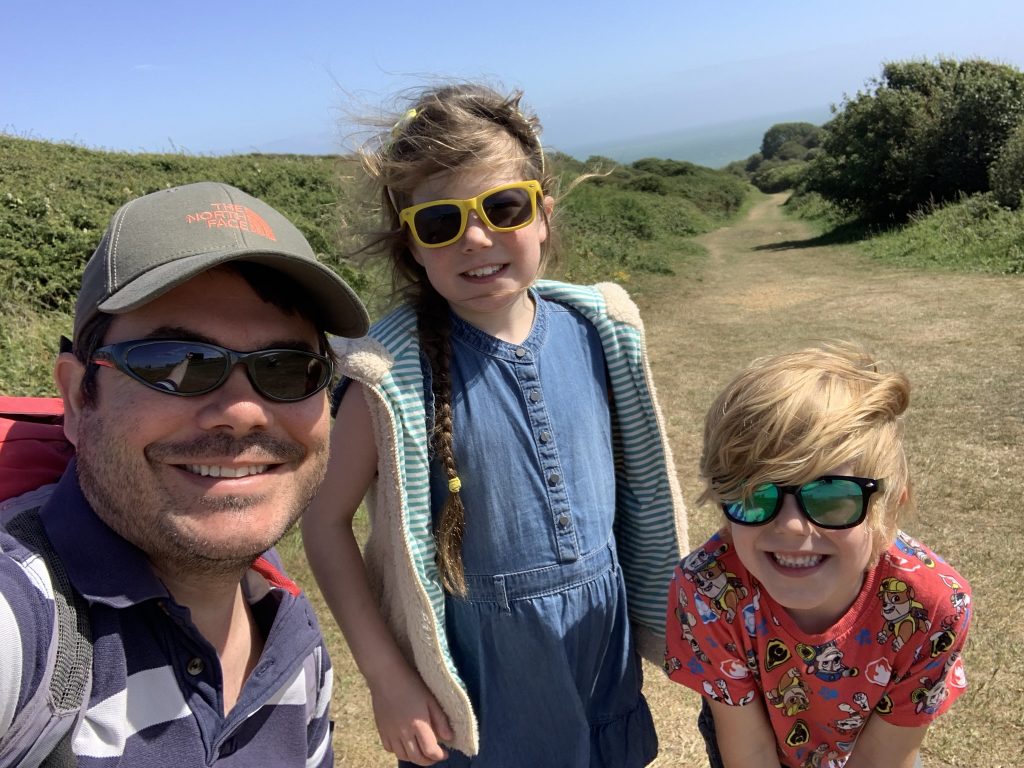
Access to cliffs and foreshore is made via the nature reserve, at the top of which free parking is available throughout the year. From the car park the path splits in three directions (shown above), the middle, unsurfaced route leads to a cattle grid, at which point a second path on the right leads directly to Hope Gap.
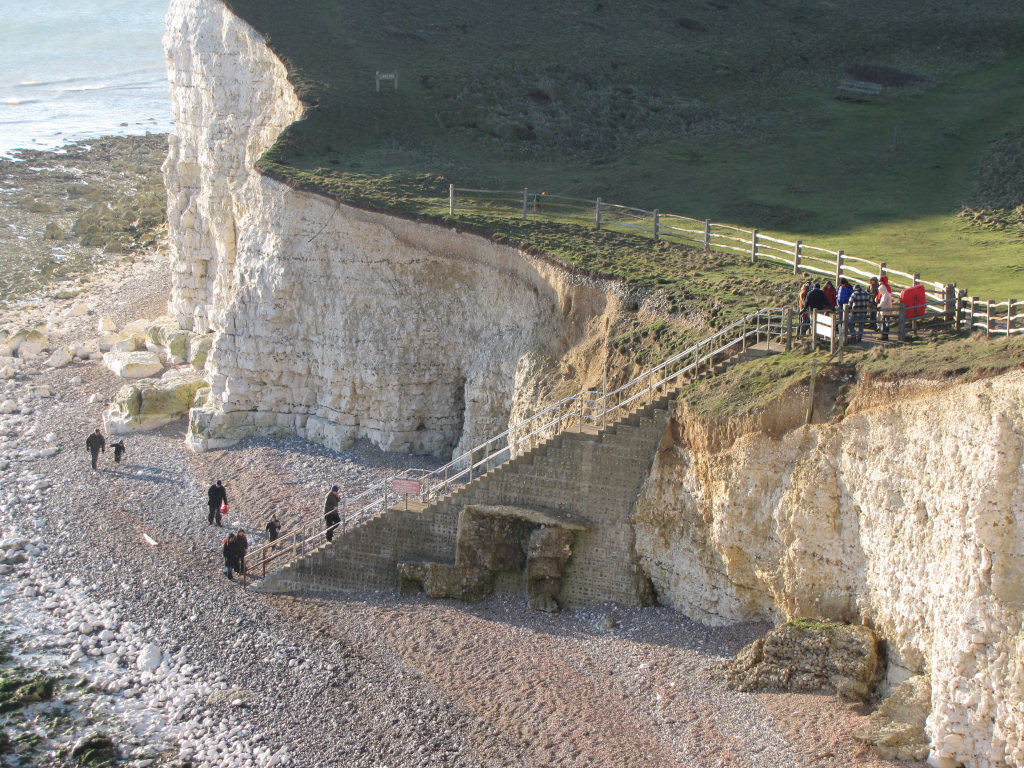
At Hope Gap three flights of concrete steps extend to the beach (shown above). Fossil can be found in either direction, however for the purposes of this report the focus is predominantly towards the northwest (right when looking out to sea).
The geology of Seaford Head
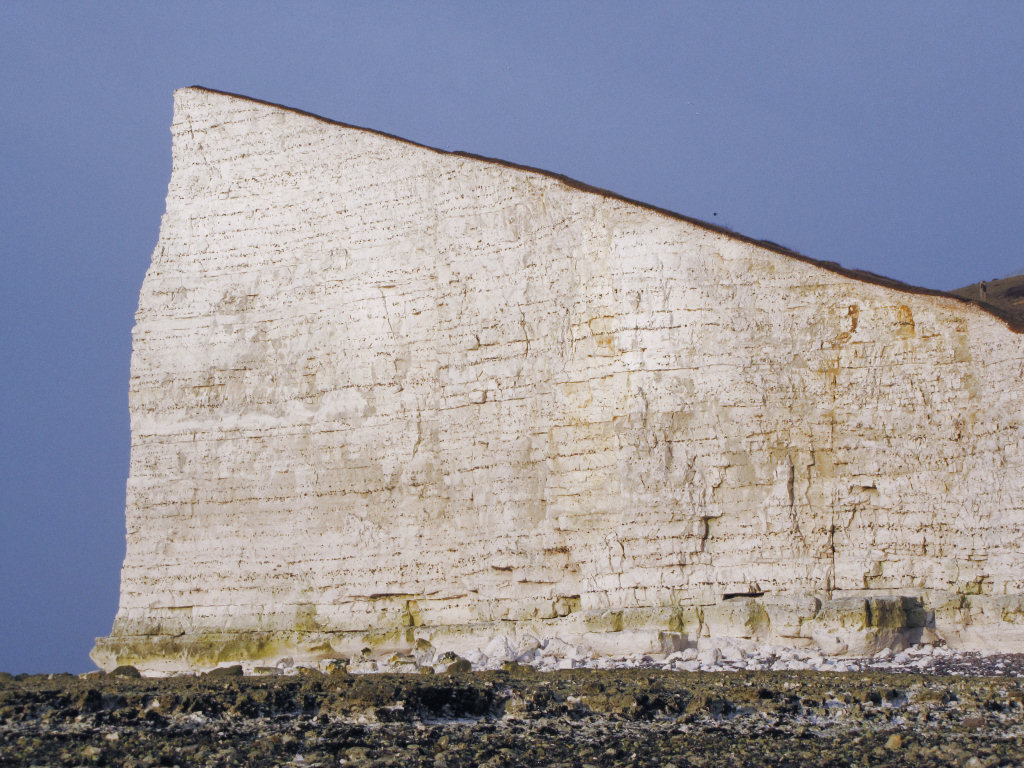
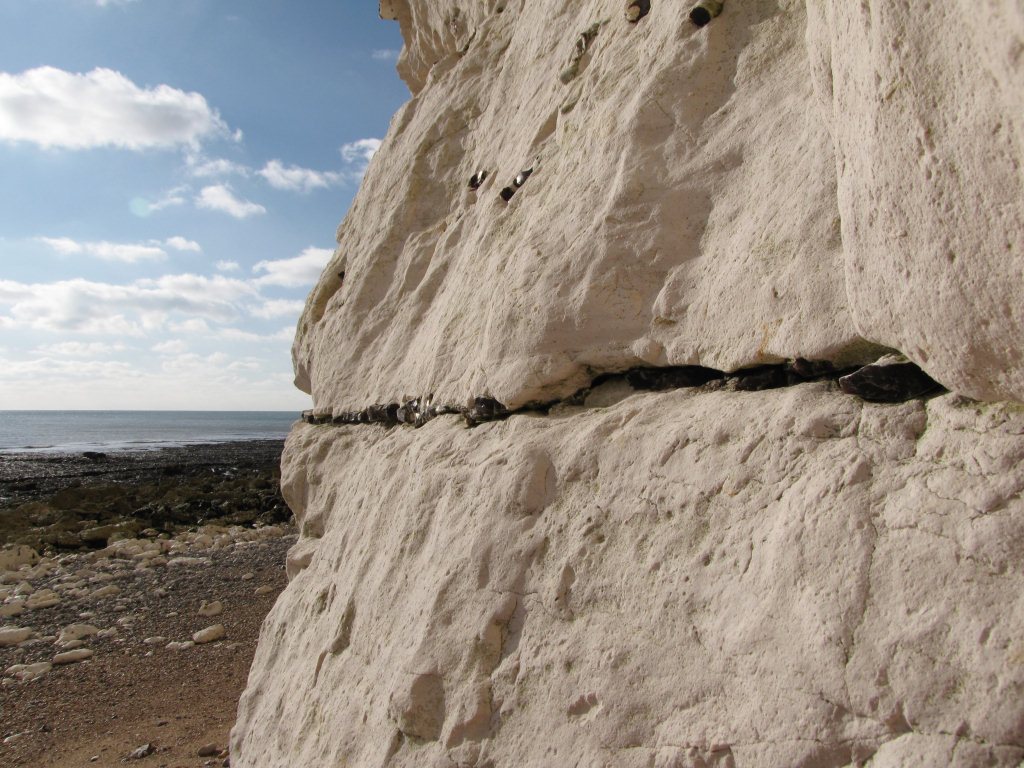
The Chalk at Seaford Head belongs to the Upper Chalk, and was deposited during the Coniacian stage of the Late Cretaceous epoch between 89-86 million years ago (mya). At this time Seaford Head and much of Great Britain, along with Europe, lay beneath a relatively shallow sea around 40°N of the equator, on an equivalent latitude to the Mediterranean Sea today.
In comparison with present-day conditions, global sea-levels during the Late Cretaceous were over 200 meters higher. The higher sea levels likely reflect a combination of extreme greenhouse conditions and heightened plate tectonics. Elevated plate tectonic activity and the associated volcanics delivered greenhouse gases to the atmosphere, fuelling the greenhouse effect. Global high temperatures melted much (perhaps all) of the ice at high latitudes, introducing significant amounts of water to the world’s oceans. Uplift of the ocean-floor in regions of active plate tectonics displaced further water onto the continental shelves.
The evidence of higher sea levels is reflected in the white Chalk at Seaford Head. The purity of the Chalk indicates its formation took place far from land, mostly free of terrestrial sands and silts that would otherwise have coloured it. At Seaford the lower half of the cliff and foreshore contains a slightly greater volume of land-sourced sediment, this is particularly evident in the hardgrounds described below. Chalk is largely comprised of the the skeletal remains of planktonic algae known as coccolithophores which accumulated to form a white ooze on the seafloor. This soft sediment was later compacted and hardened (lithified) to form Chalk – a relatively soft rock itself. To discover more about Chalk click here.
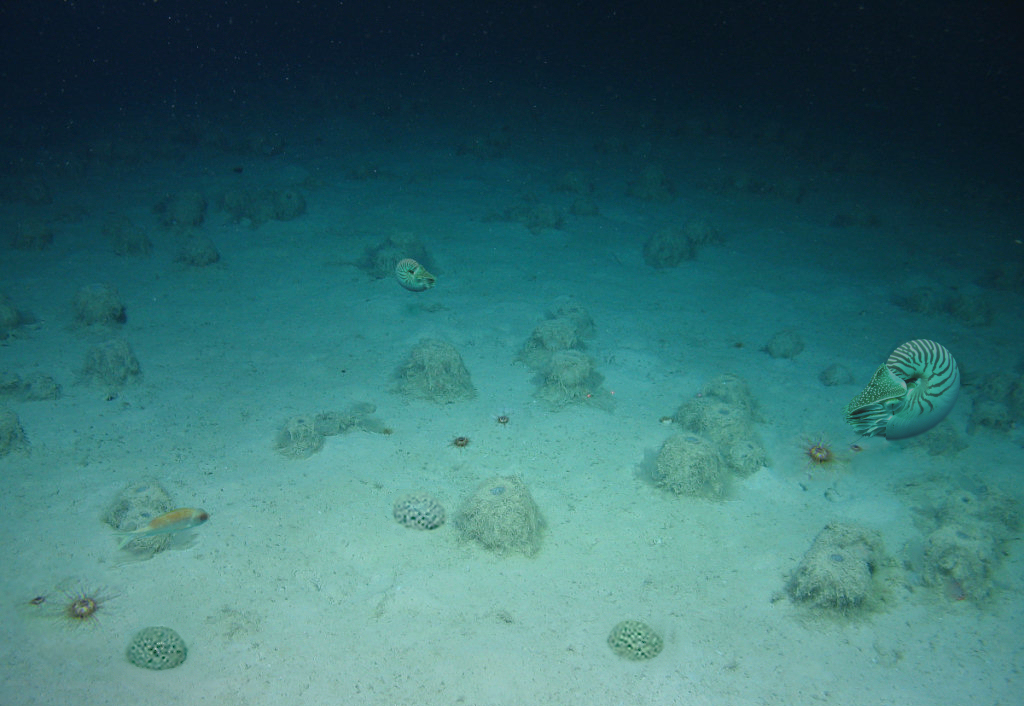
Today the Chalk appears above sea level, the result of lower present-day sea levels and widespread uplifting caused by the pressure of the European and African continental plates colliding (generating the Alps), a process that took place at its greatest extent 30-25 mya. More recently, following the end of the last ice age and subsequent increase in sea levels (albeit to a less extent than 84 million years ago), the coastline has moved inland, exposing the elevated Chalk to intensive erosion and sculpting it into a vertical cliff-face.
The earliest Chalk at Seaford Head belongs to the Lewes Nodular Chalk Formation and dates from 89 mya. The formation is well exposed on the foreshore and in the lower half of the cliff (see fig. 1 below). Within the cliff-face several distinctive marker horizons can be seen, in particular the Hope Gap Sheet Flint which lies immediately above the Hope Gap Hardground (described below). A second prominent flint horizon, known as the Seven Sisters Flint Band (Seaford Chalk Formation), appears higher in the cliff, further along the coast.

From the steps at Hope Gap and onwards towards Seaford an intermittent ledge protrudes from the cliff base. The upper surface of the ledge indicates the top of the Hope Gap Hardground – a conspicuous layer comprised of iron-stained nodular white Chalk interspersed with soft, grey Chalk (shown below).
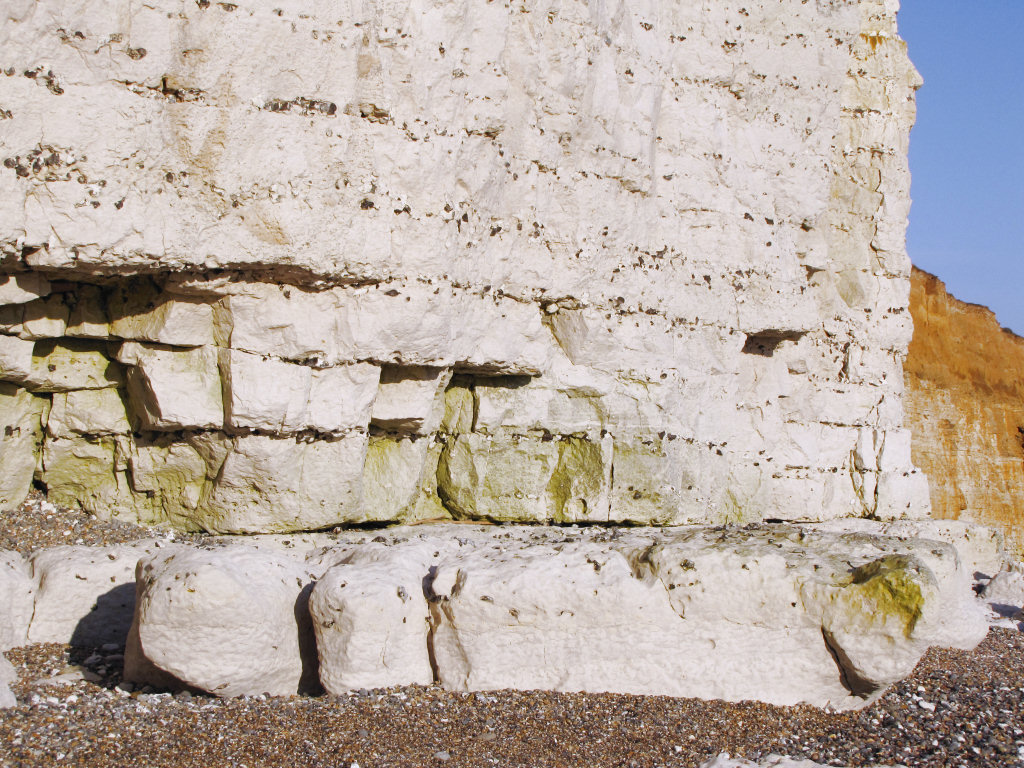
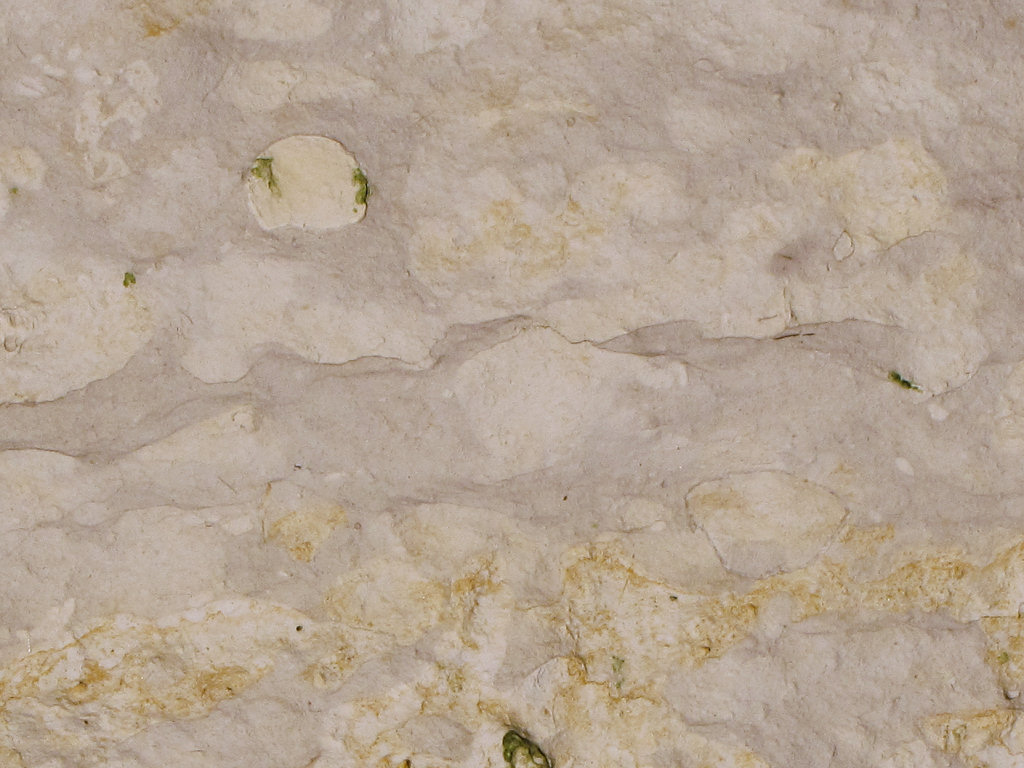
Hardgrounds are understood to reflect disruptions to the steady accumulation of Chalk forming sediment, during which sedimentation simply ceased and/or the unconsolidated, soft surface sediments were stripped away by bottom currents or slumping, exposing the older consolidated Chalk sediment. Research has shown that a single hardground may have been exhumed 16 or more times before long-term burial took place.
The hardground fabric was formed by soft (grey) Chalk infilling the burrows and borings of crustaceans within the hardened (white) Chalk. During this time the irregular surface of the hardened Chalk was encrusted by oysters. Close inspection of the hardground reveals crustacean burrows/borings cutting through the oyster shells.
Immediately above the Hope Gap Hardground (and Sheet Flint) are the Beeding Hardgrounds, also belonging to the Lewes Nodular Chalk Formation. This particular horizon contains a fascinating abundance of shattered flints still in situ (see below).
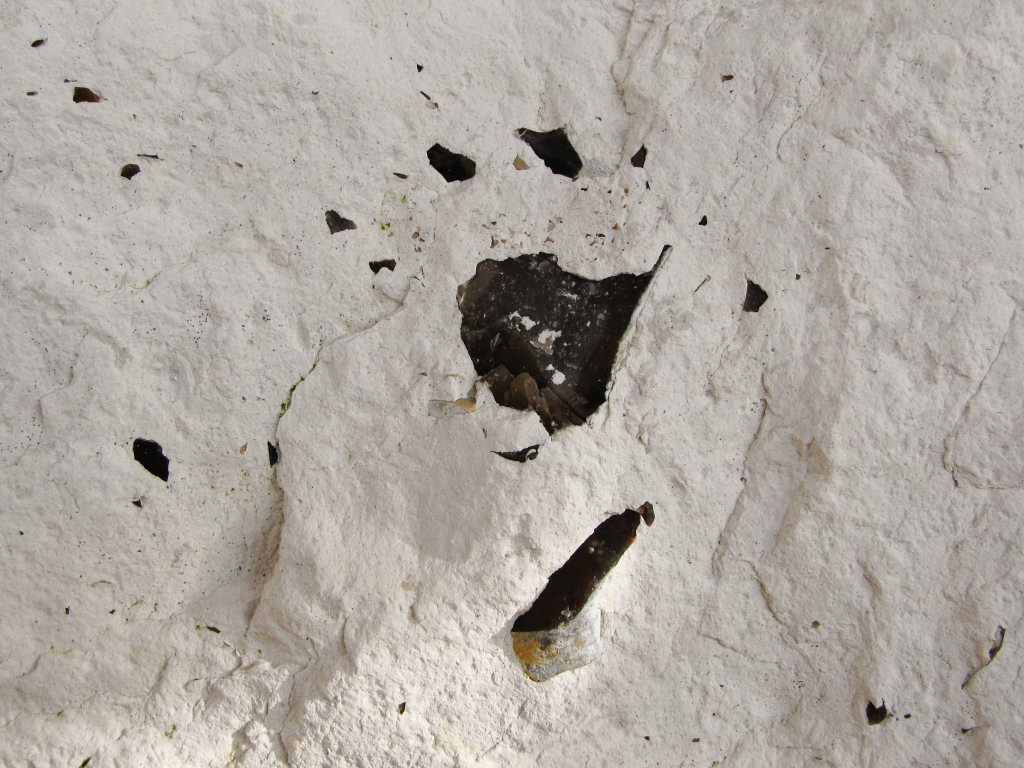
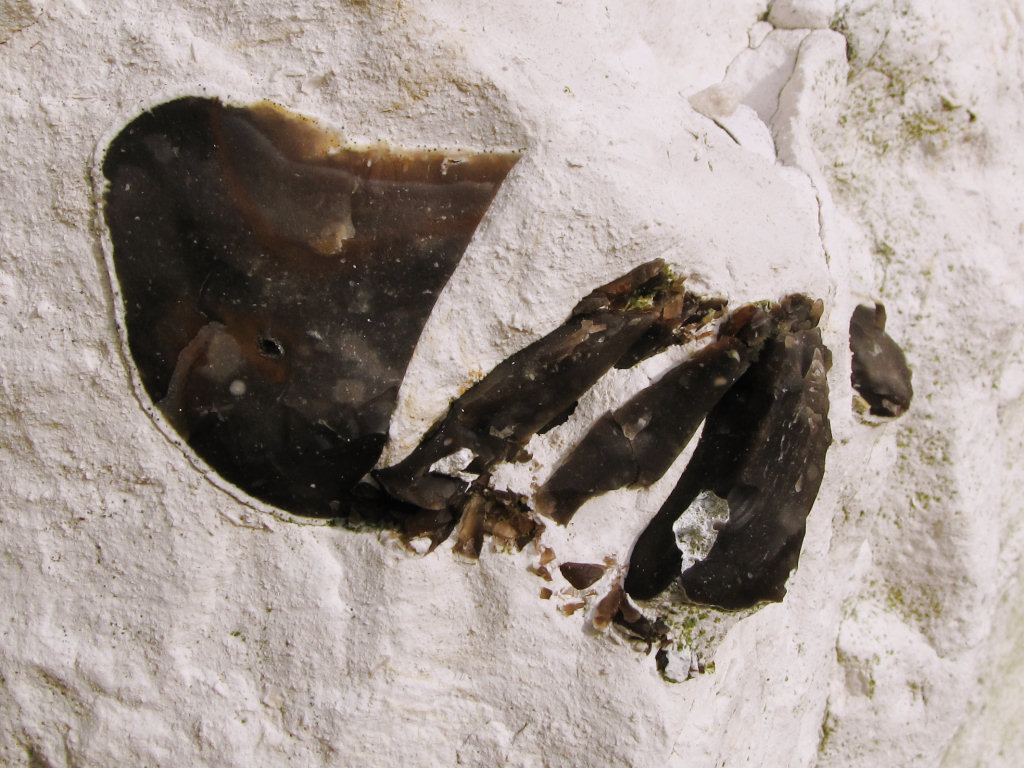
The shattered flints provide evidence of a significant geological event that took place after the flint nodules were formed. They are thought to have formed during mass movements of the Chalk sediment, at a stage where the flint was hard and brittle, but the Chalk was not yet fully lithified.
There is no consensus as to what caused the sediment to slide, but the theories can be narrowed to three possible scenarios: (1) Localised tectonic uplifting of the seafloor and/or (2) tectonically generated vibrations (earthquakes). (3) A rapid rise in sea level caused a sudden increase in overburden, altering the sediment’s pore pressure and reducing its shear strength, and if already on a gentle slope, inducing sliding. Regardless of their cause, these fascinating features add a dynamic chapter in the Chalk story.
Moving further along the coast the first of many deep grooves can be seen penetrating the Seaford Chalk at the cliff-top (shown below). These pipe structures, known as dissolution pipes, appear in cross-section as the cliff retreats. Each vertical pipe was formed (and continues to do so) as rain water percolates through the overlying Quaternary sediments, becoming increasingly acidic in the process, and dissolving the underlying Chalk as gravity channels the water along natural weaknesses.
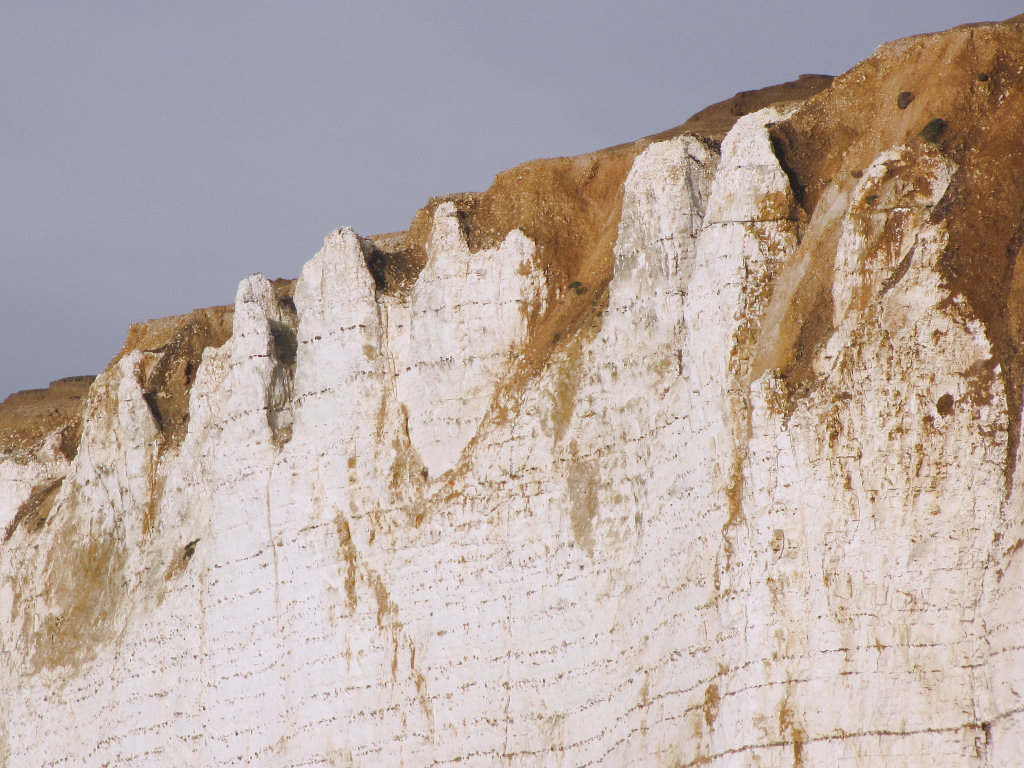
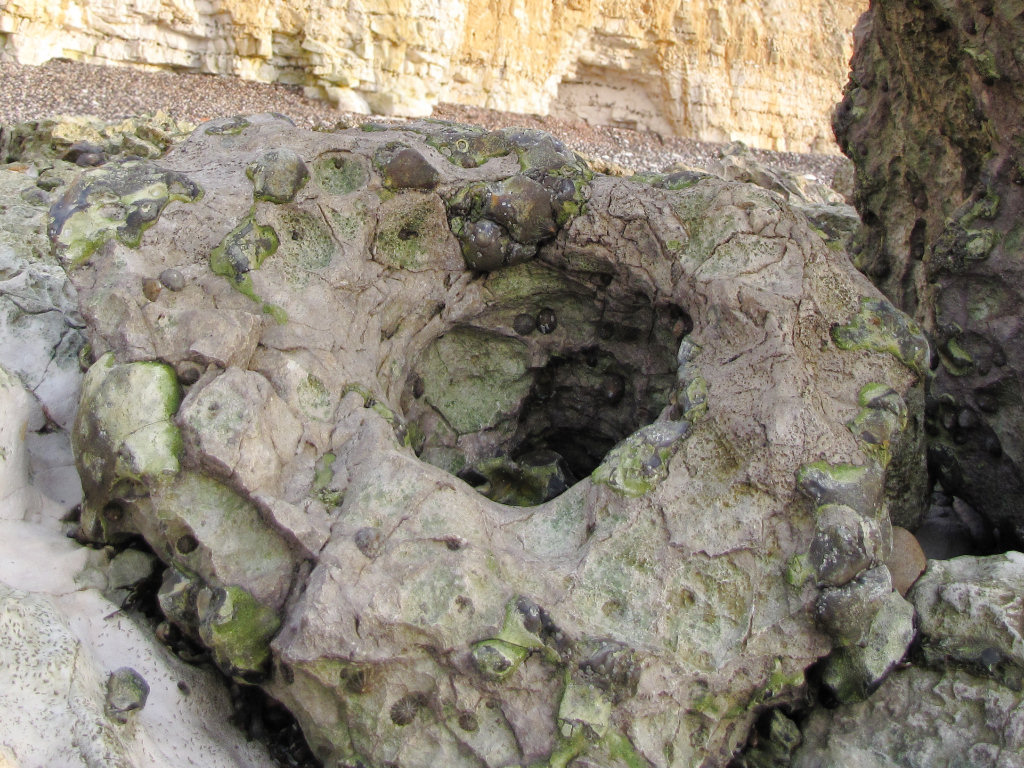
The overlying Quaternary sediments were transported to the area during the most recent ice age, between 115,000 – 10,000 years ago (Devensian stage of the Pleistocene epoch), during which time much of Britain lay beneath a thick ice-sheet. Although the limit of the ice-sheet extended only as far south as Norfolk and the southern parts of Wales, the relative lack of precipitation across the southern area created a mostly inhospitable, wind swept, frozen desert landscape. The freezing winds cut across the exposed land, carrying with them weathered sands and soils. These sediments, known as loess, accumulated in the Chalk valleys of the Seaford area (which had been shaped by earlier ice ages, as melt water eroded the landscape).
Although the Seaford area was beyond the reach of the erosive northern ice-sheet, the freezing conditions created localised frost-shattering which loosened and crumbled the sides of the Chalk valleys. These loose rock fragments accumulated at the foot of the valley sides and would later be transported along the valleys by rivers and streams to form coombe deposits.
Towards the latter part of the Devensian ice age, around 25,000 years ago, precipitation increased and the Seaford area was covered by snow and ice. This period of relatively high precipitation came to a gradual end around 14,500 years ago, and was replaced by more temperate conditions. As temperatures increased seasonal melt waters flowed along the valleys, carrying with them large volumes of loess and rock fragments (coombe deposits) into the low-lying areas.
From the steps at Hope Gap the loess and coombe deposits can be clearly seen in the cliff-face, where they appear as an orange stained accumulation approximately 10m thick (see below). The photos show the underlying white contour of the former Chalk valley which itself was probably shaped by the course of the River Cuckmere at the time.
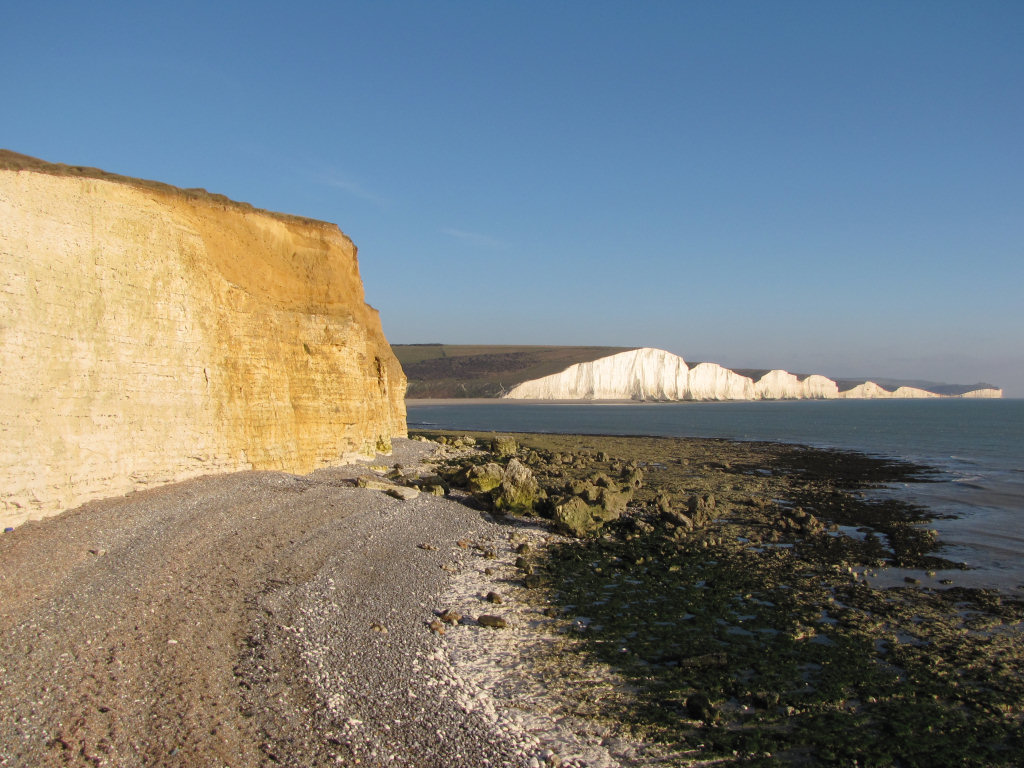
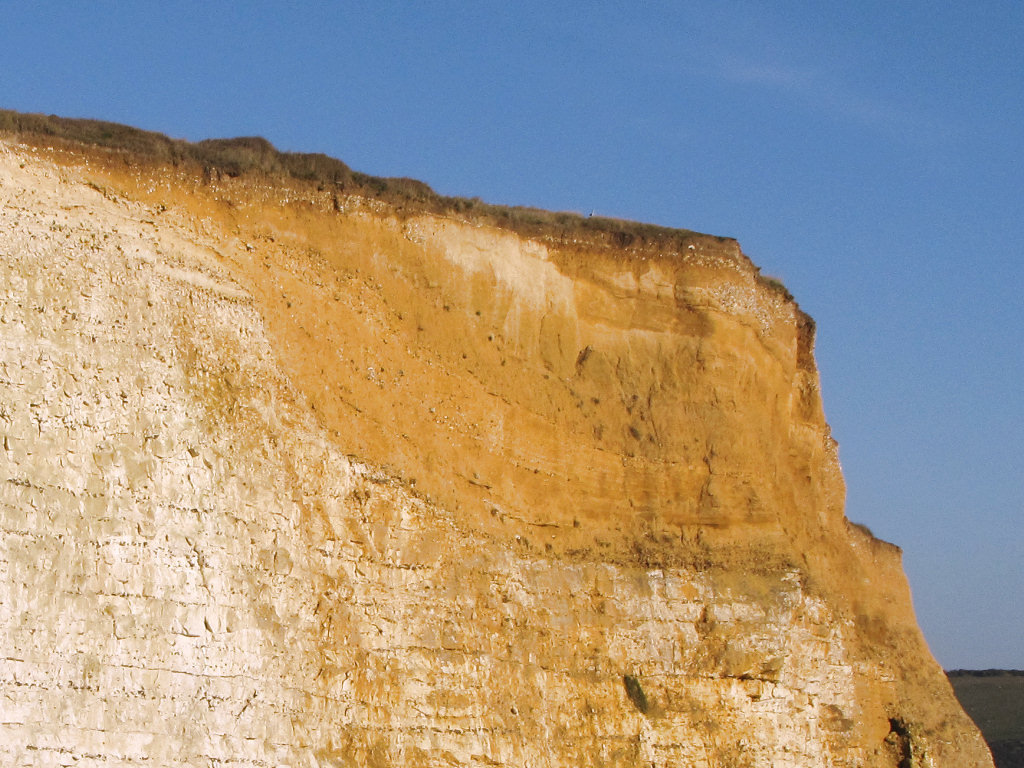
Since the return to more temperate conditions and subsequent reduction of ice at higher latitudes, global sea-levels have risen 120m. The advancing sea, known as a marine transgression, has submerged much of the former landmass, shifting the coastline inland and shaping Seaford Head as we know it.
Where to look for fossils?
Fossils can be found in either direction of the steps at Hope Gap, although the best exposures are located towards Seaford in the northwest. The most productive (and safest) place to search for fossils is on the foreshore at low-tide. Chalk boulders and flint nodules are scattered along the entire section, providing a constant supply of fossils.
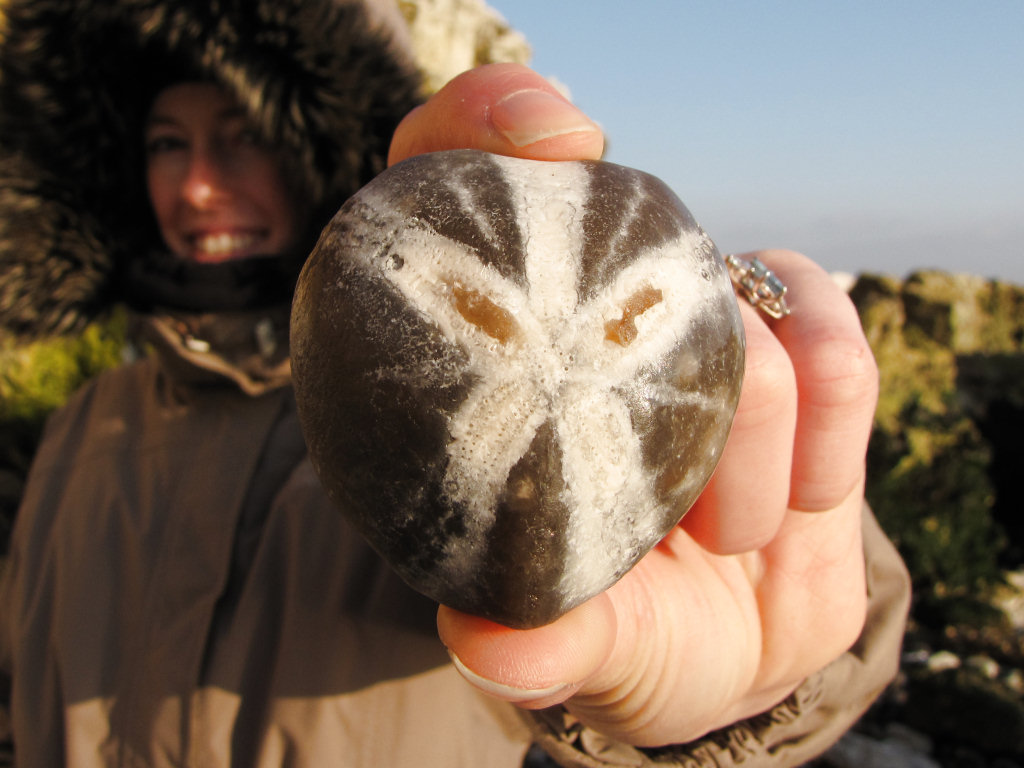
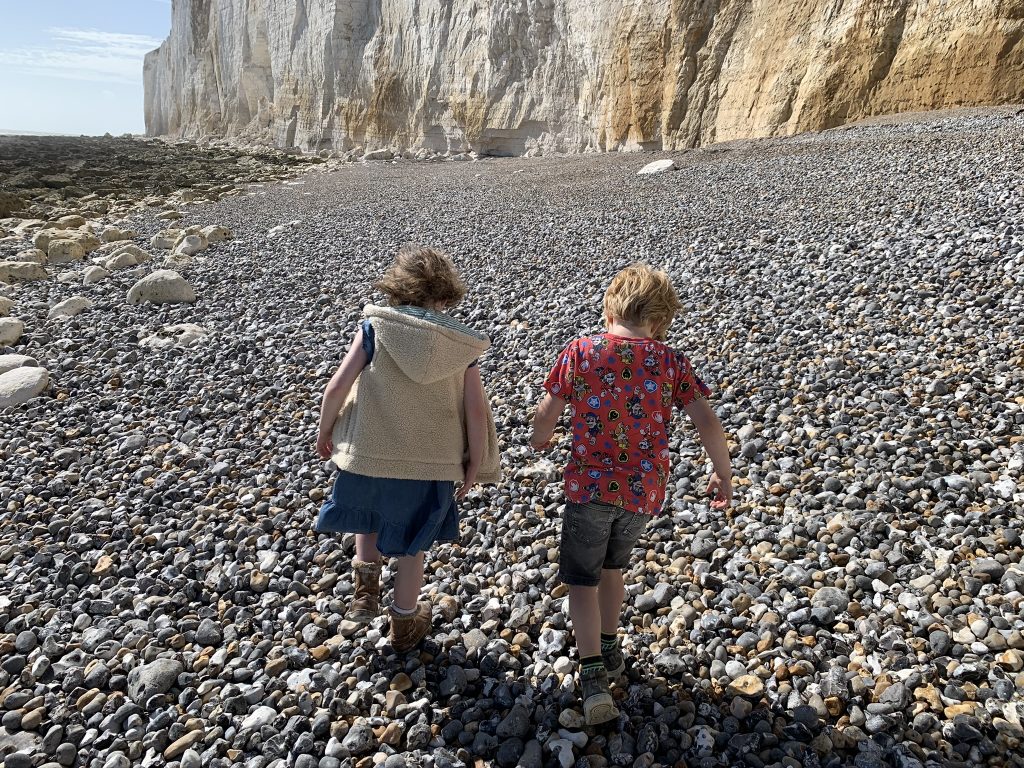
Fossils can also be found protruding above the surface of fallen boulders and in the lower cliff, although the latter is within the zone of falling rocks, so care should be taken and a hard hat worn.
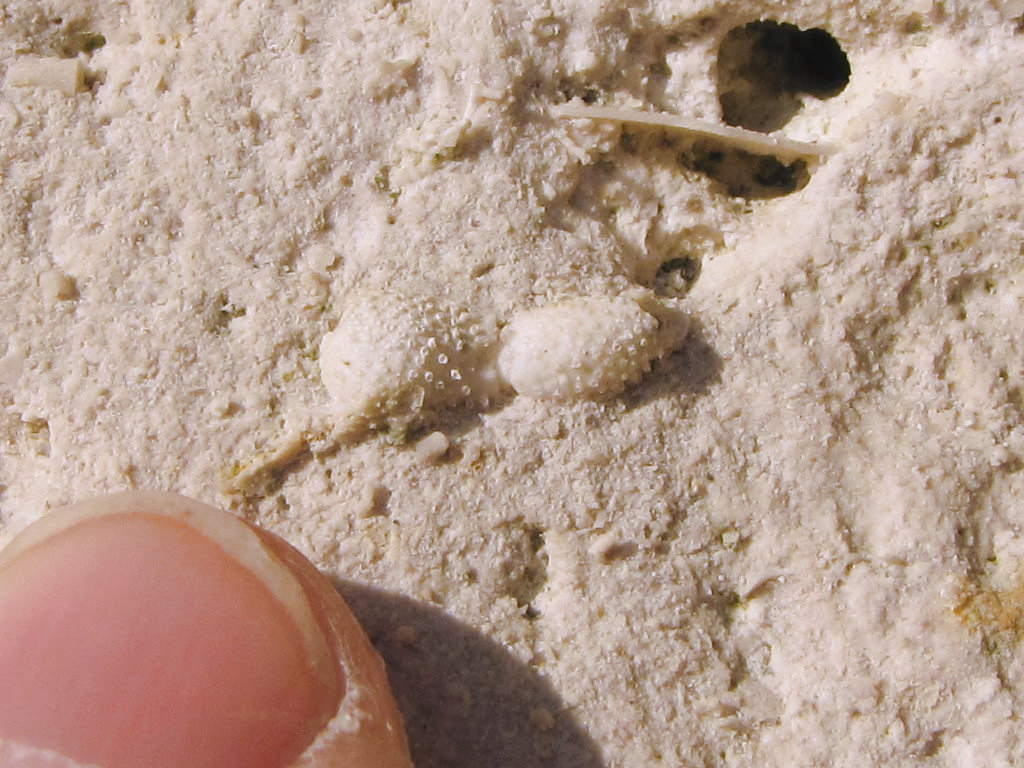
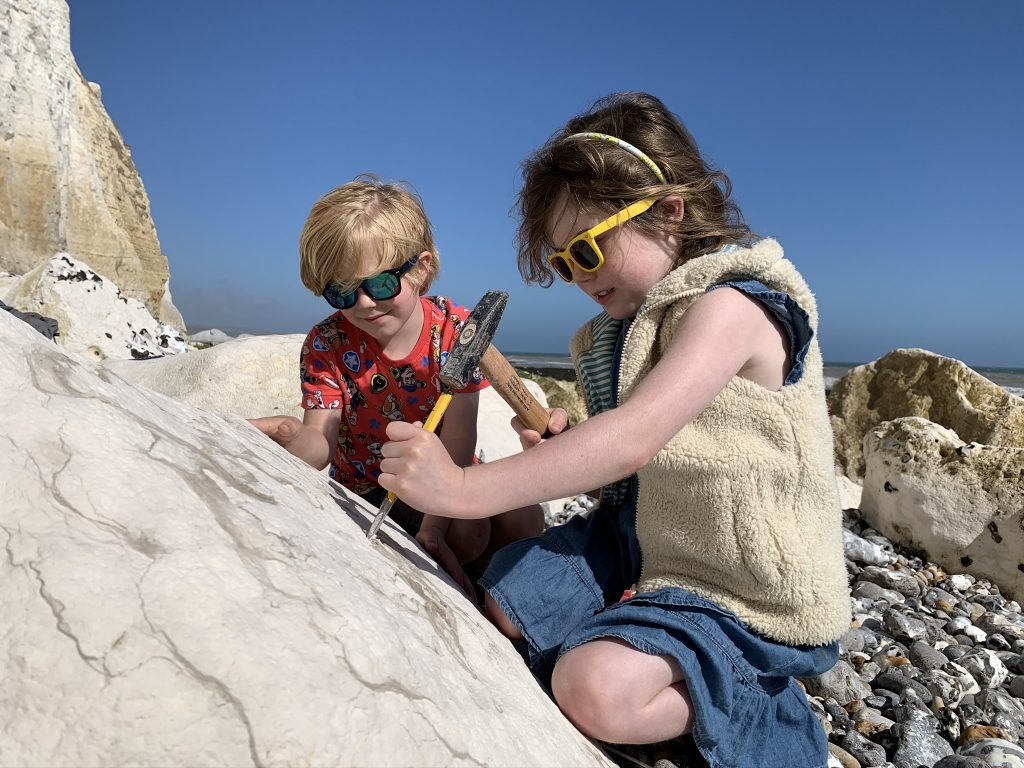
Please note the beach platform and cliffs are assigned SSSI status, which requires visitors avoid damaging (including hammering) the area. From a fossil collecting perspective this means it’s not permitted to extract specimens that are in situ. Collecting efforts should be directed towards the loose boulders and pebbles on the foreshore.
As with all coastal locations, a fossil hunting trip is best timed to coincide with a falling or low-tide. For a relatively low one-off cost we recommend the use of Neptune Tides software, which provides future tidal information around the UK. To download click here. Alternatively a free short range forecast covering the next 7 days is available on the BBC website click here.
What fossils might you find?
Below are a selection of finds made at Seaford Head. Among the common finds include echinoids, brachiopods, bivalves and sponges; less common finds include crustacean burrows lined with fish scales and starfish remains (among others).
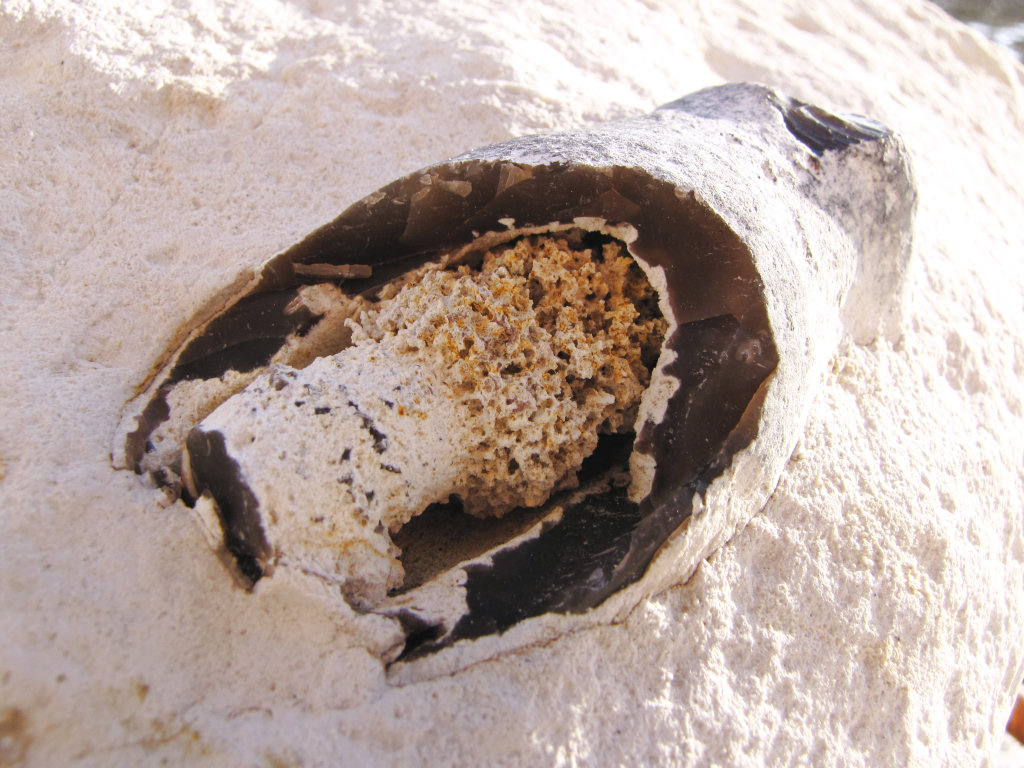
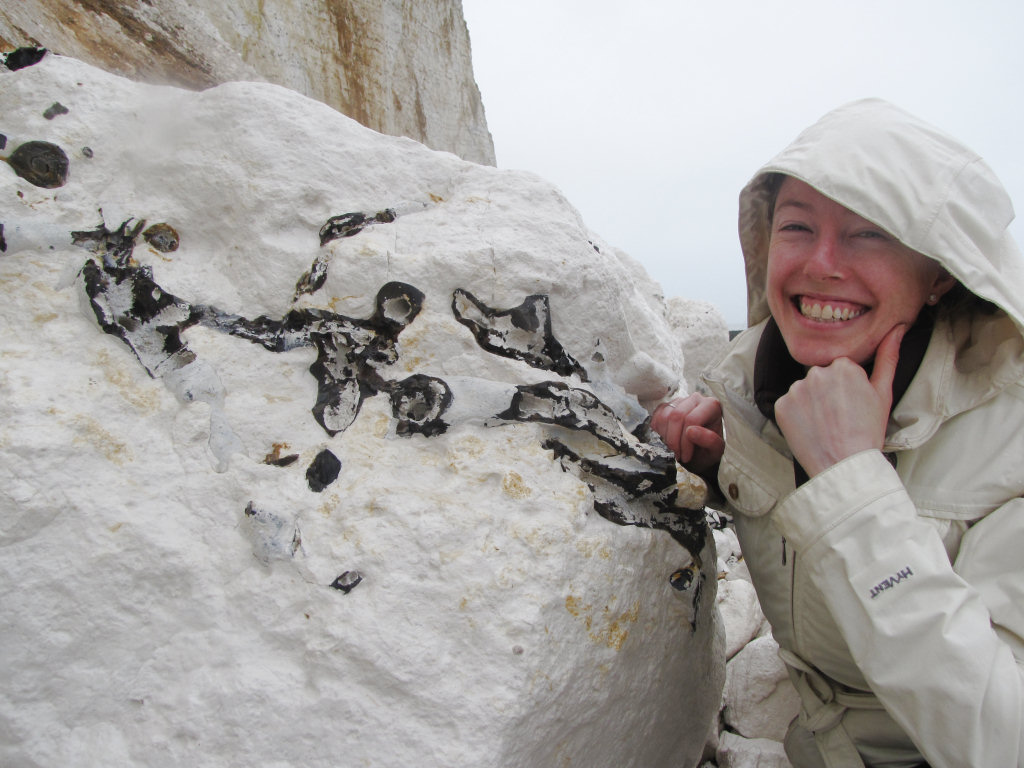
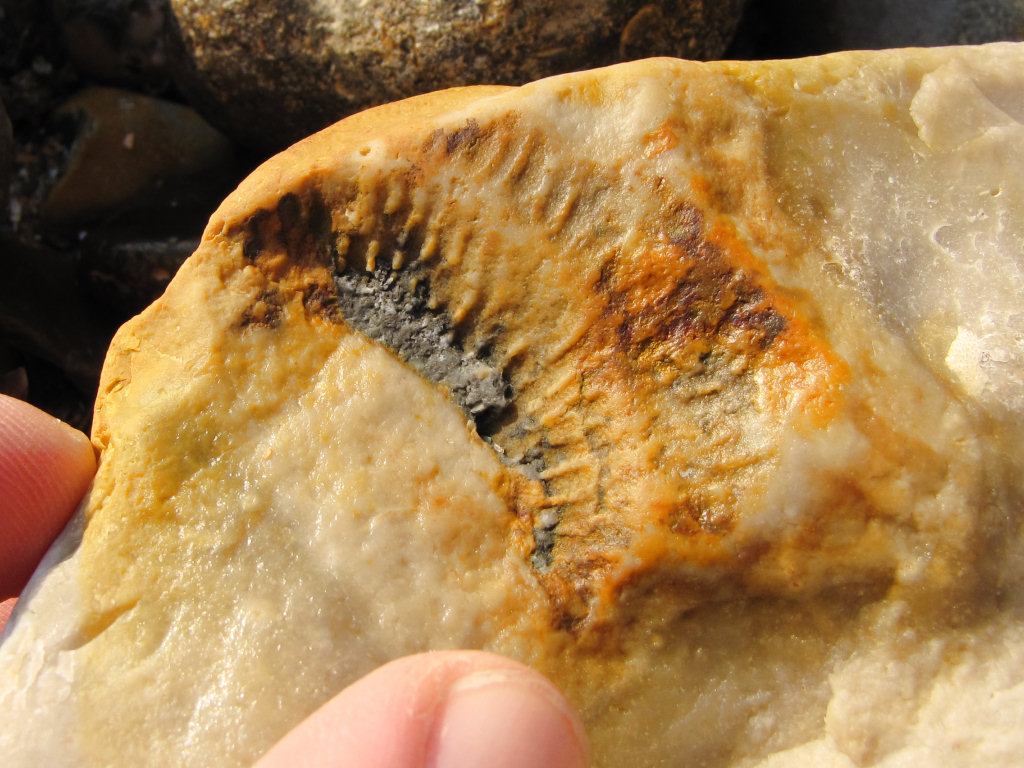
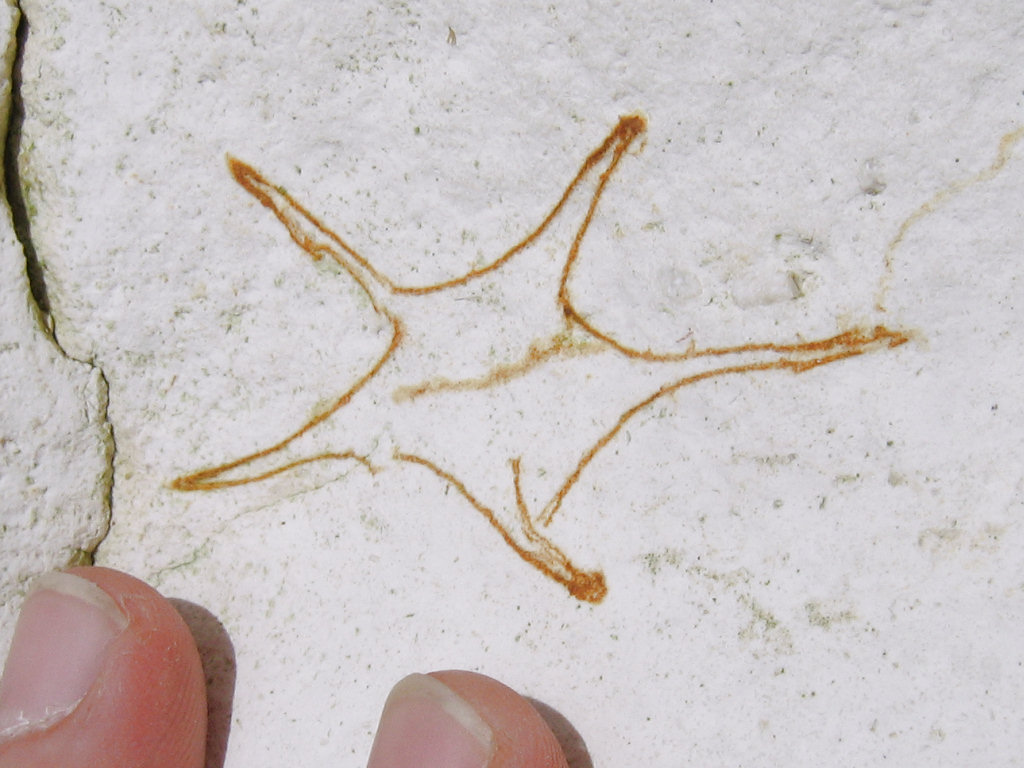
Above: A cross-section through a sponge.
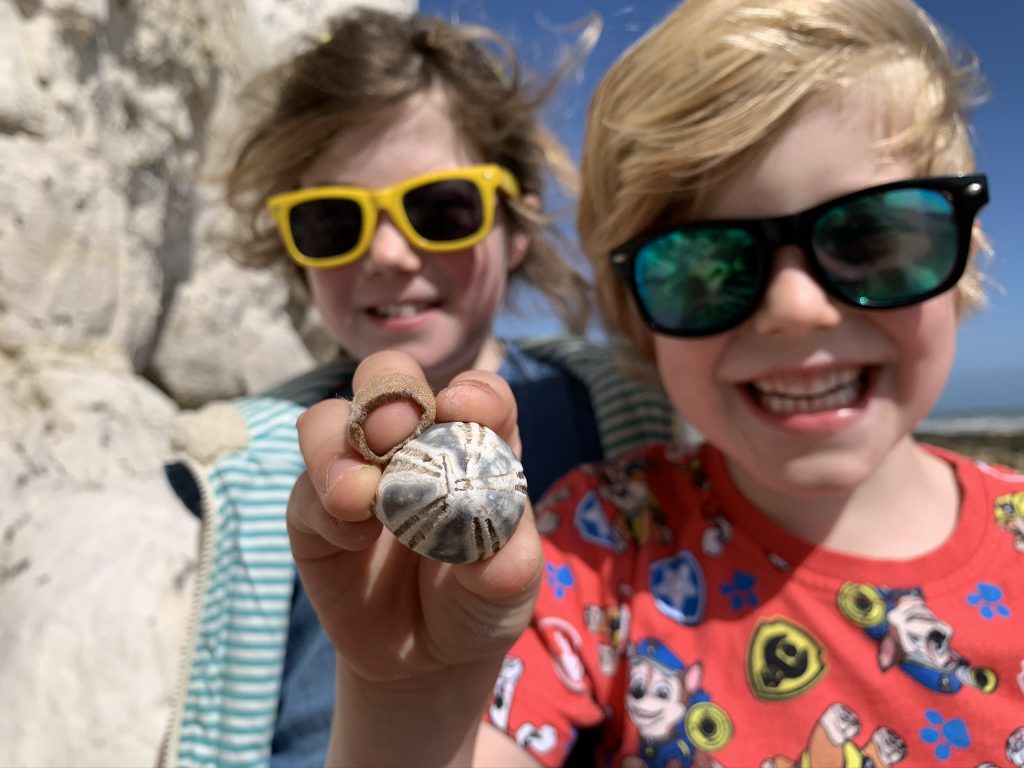
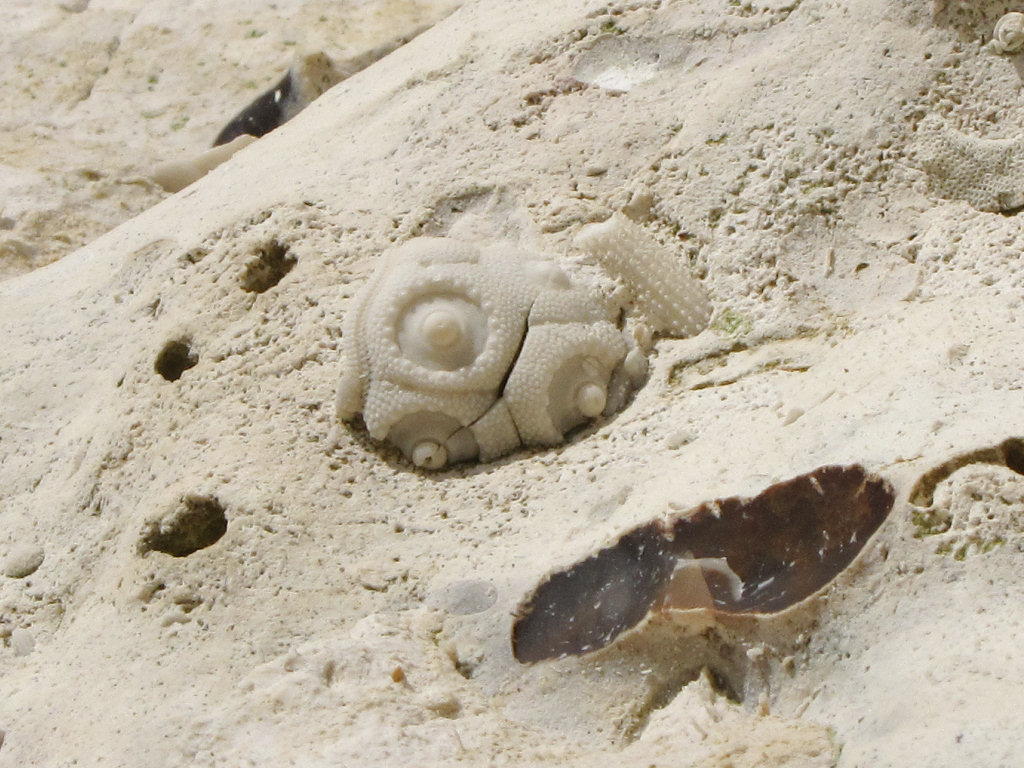
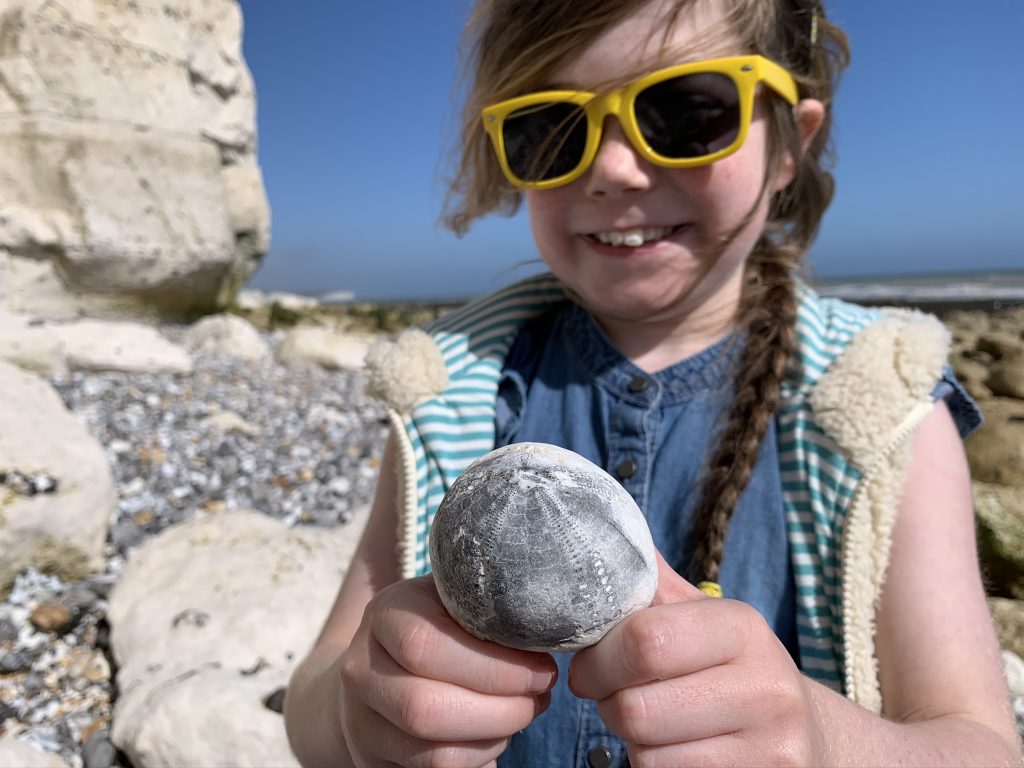
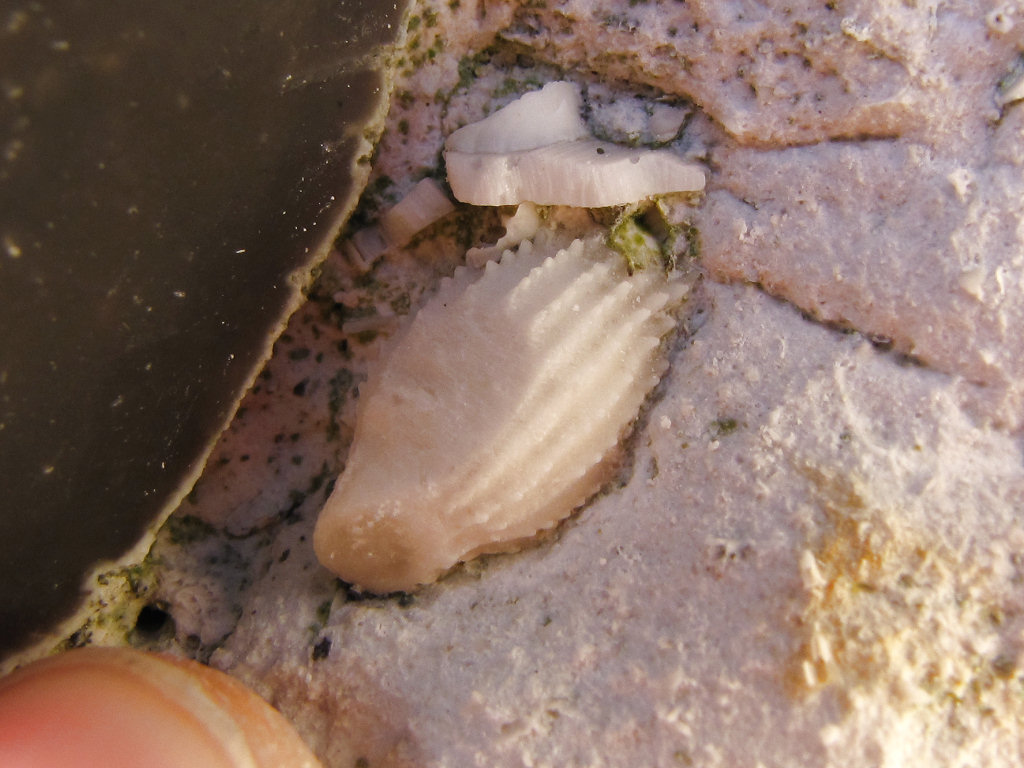
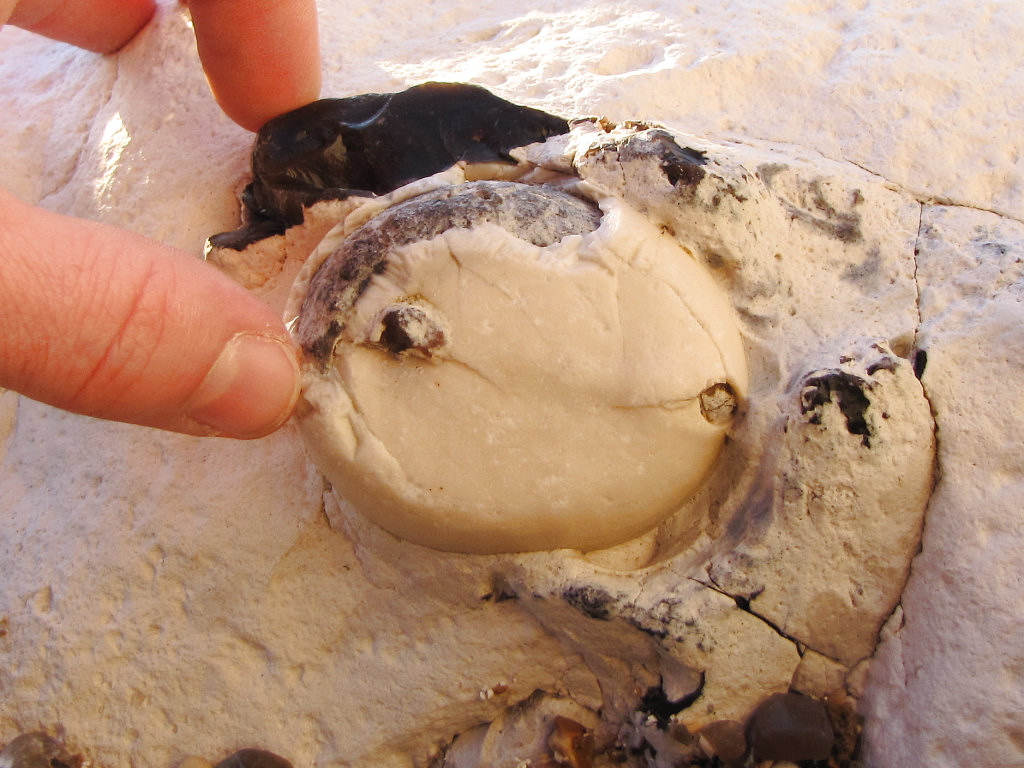
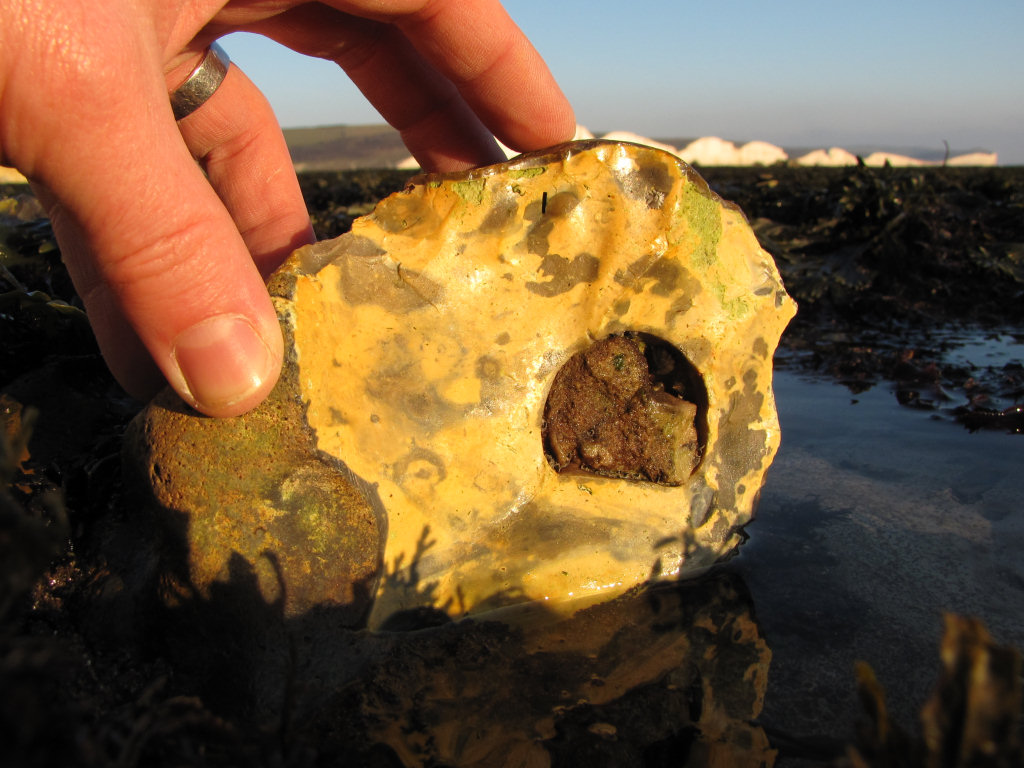
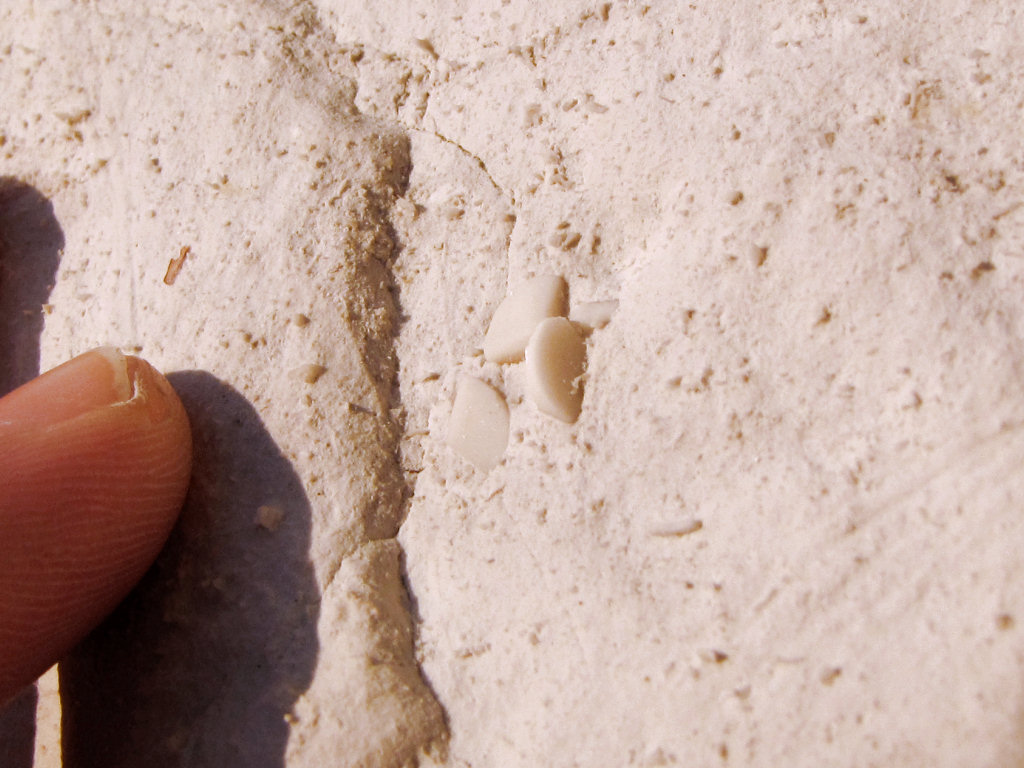
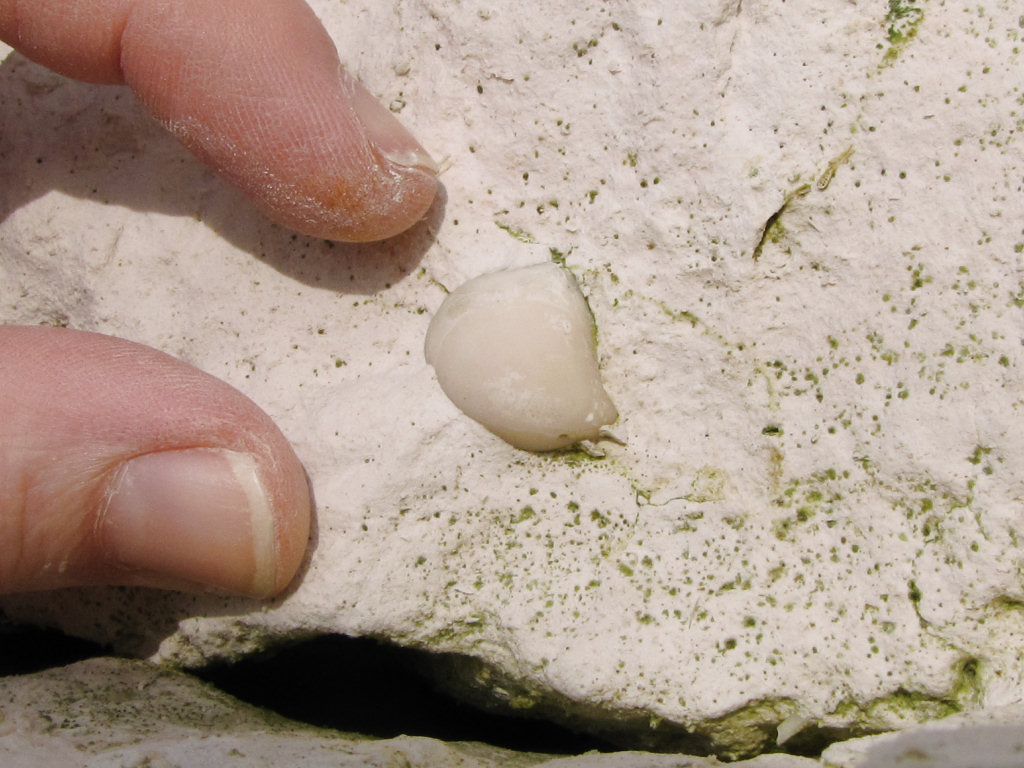
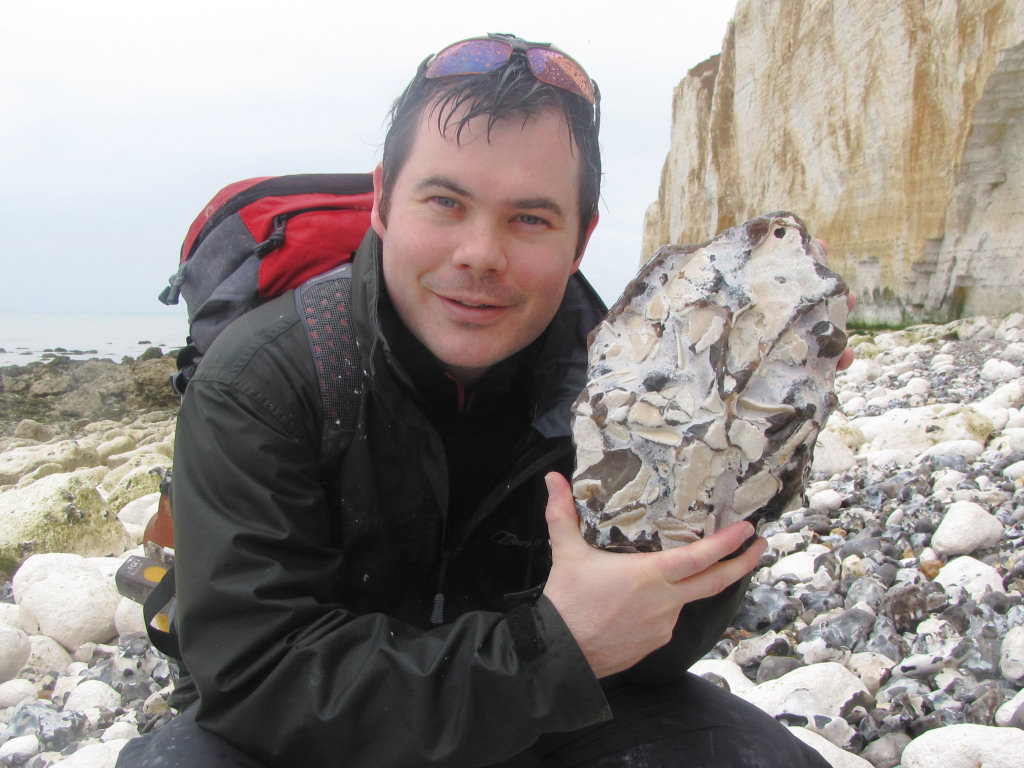
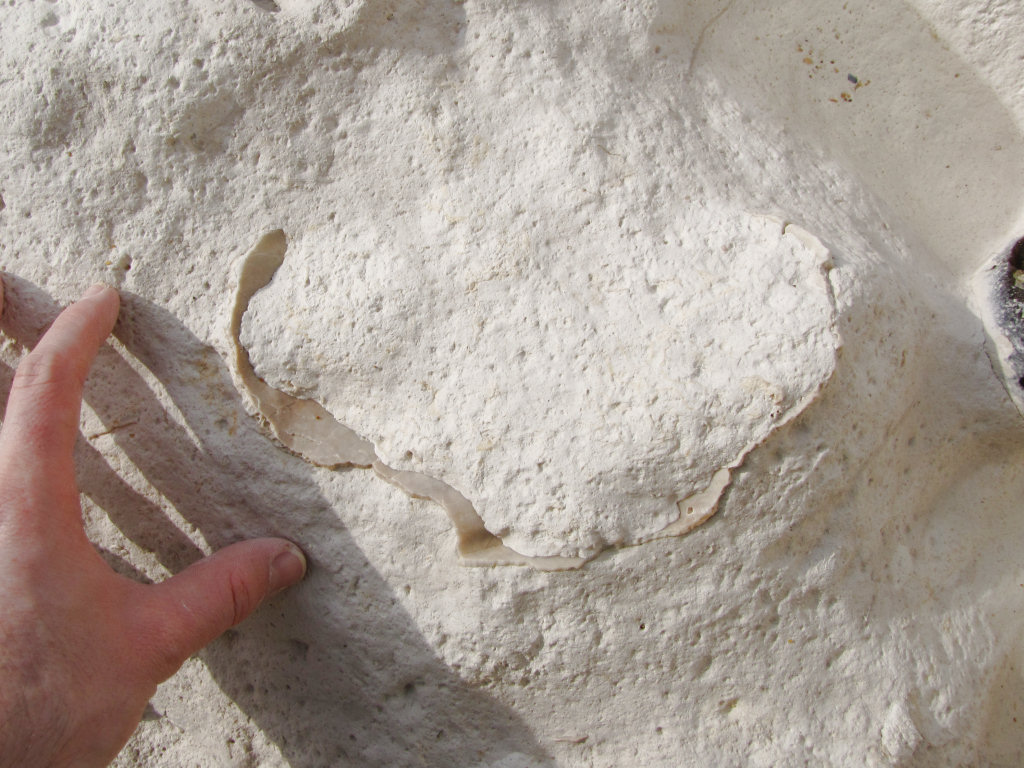
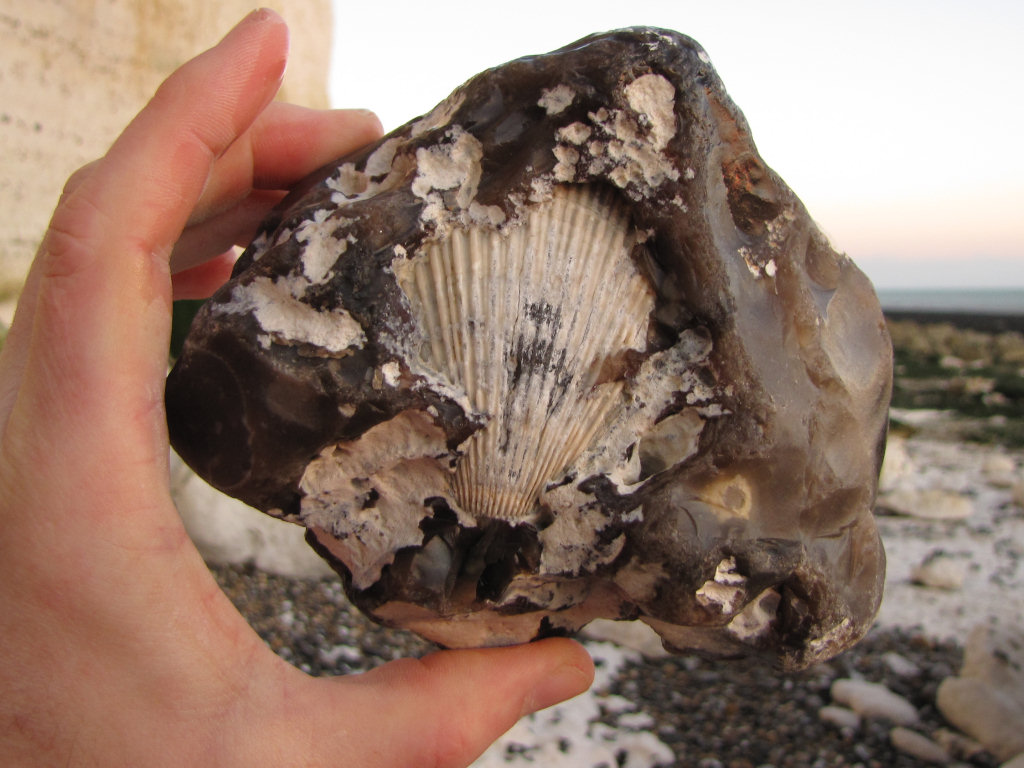
As well as fossils, minerals can also be found, in particular beautiful quartz crystals within broken flints, and intricate star shape, silver structures within split iron pyrite nodules (shown below).

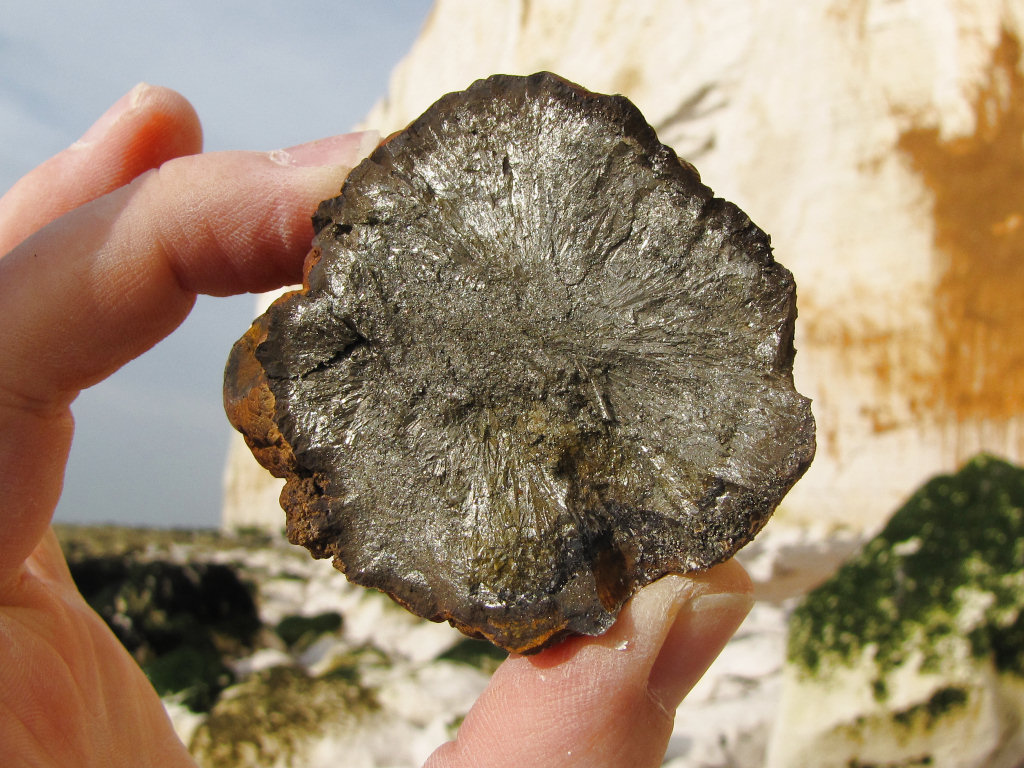
Tools & equipment

It’s a good idea to spend some time considering the tools and equipment you’re likely to require while fossil hunting at Seaford Head. Preparation in advance will help ensure your visit is productive and safe. Below are some of the items you should consider carrying with you. You can purchase a selection of geological tools and equipment online from UKGE.
Hammer: A strong hammer will be required to split prospective rocks. The hammer should be as heavy as can be easily managed without causing strain to the user. For individuals with less physical strength and children (in particular) we recommend a head weight no more than 500g.
Chisel: A chisel is required in conjunction with a hammer for removing fossils from the Chalk. In most instances a large chisel should be used for completing the bulk of the work, while a smaller, more precise chisel should be used for finer work. A chisel founded from cold steel is recommended as this metal is especially engineered for hard materials.
Safety glasses: While hammering rocks there’s a risk of injury from rock splinters unless the necessary eye protection is worn. Safety glasses ensure any splinters are deflected away from the eyes. Eye protection should also be worn by spectators as splinters can travel several metres from their origin.
Strong bag: When considering the type of bag to use it’s worth setting aside one that will only be used for fossil hunting, rocks are usually dusty or muddy and will make a mess of anything they come in contact with. The bag will also need to carry a range of accessories which need to be easily accessible. Among the features recommended include: brightly coloured, a strong holder construction, back support, strong straps, plenty of easily accessible pockets and a rain cover.
Walking boots: A good pair of walking boots will protect you from ankle sprains, provide more grip on slippery surfaces and keep you dry in wet conditions. During your fossil hunt you’re likely to encounter a variety of terrains so footwear needs to be designed for a range of conditions.
For more information and examples of tools and equipment recommended for fossil hunting click here or shop online at UKGE.
Protecting your finds
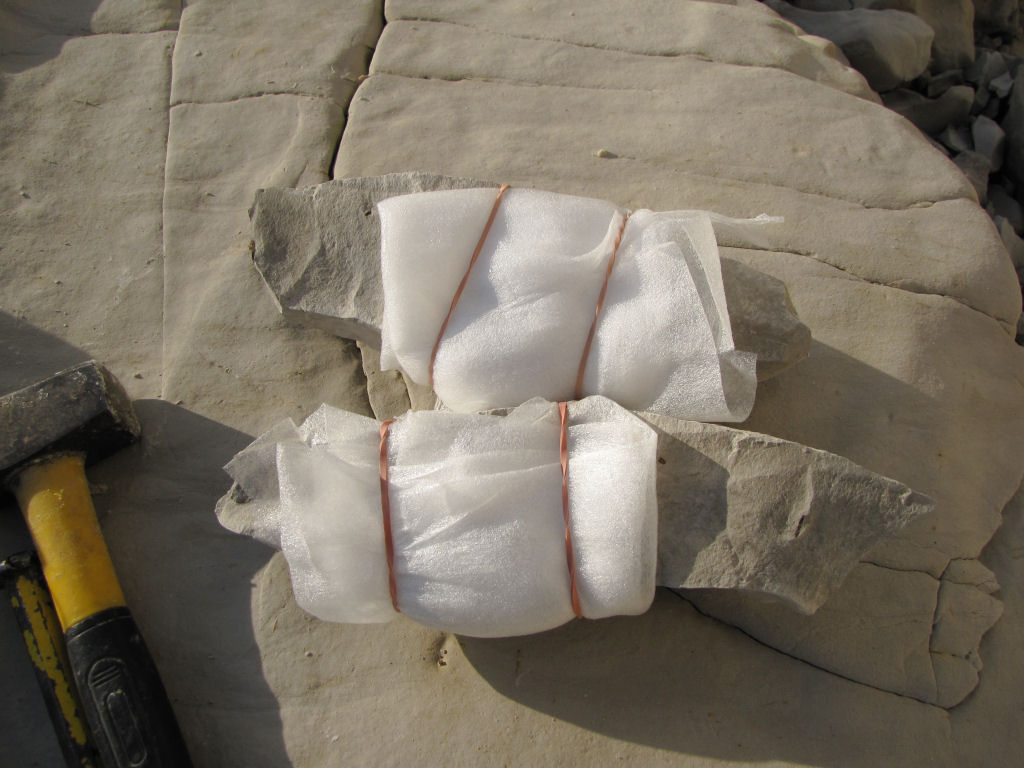
It’s important to spend some time considering the best way to protect your finds onsite, in transit, on display and in storage. Prior to your visit, consider the equipment and accessories you’re likely to need, as these will differ depending on the type of rock, terrain and prevailing weather conditions.
When you discover a fossil, examine the surrounding matrix (rock) and consider how best to remove the specimen without breaking it; patience and consideration are key. The aim of extraction is to remove the specimen with some of the matrix attached, as this will provide added protection during transit and future handling; sometimes breaks are unavoidable, but with care you should be able to extract most specimens intact. In the event of breakage, carefully gather all the pieces together, as in most cases repairs can be made at a later time.
For more information about collecting fossils please refer to the following online guides: Fossil Hunting and Conserving Prehistoric Evidence.
Join us on a fossil hunt
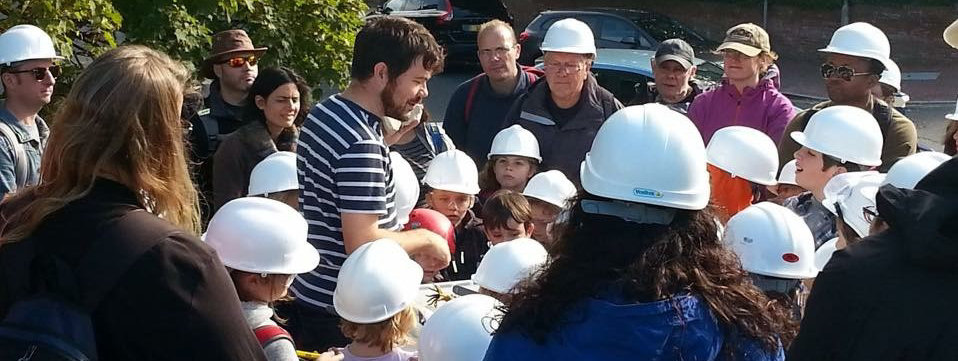
Discovering Fossils guided fossil hunts reveal evidence of life that existed millions of years ago. Whether it’s your first time fossil hunting or you’re looking to expand your subject knowledge, our fossil hunts provide an enjoyable and educational experience for all. To find out more click here.
Page references: A Dynamic Stratigraphy of the British Isles, A. Anderton, P. H. Bridges, M. R. Leeder and B. W. Sellwood, 1992; British Geological Survey, Geology of the country around Brighton and Worthing, B. Young and R. D. Lake, 1988; Geologists’ Association Guide No.57, The Chalk of Sussex and Kent, R. N. Mortimore, 1997; Geological Conservation Review Series, British Upper Cretaceous Stratigraphy, R. N. Mortimore, C. J. Wood and R. W. Gallois, 2001; Fossil of the Chalk, second edition, A. B. Smith and D. J. Batten, 2002; A Geological Time Scale, F. Gradstein, J. Ogg and A. Smith, 2004; www.en.wikipedia.org; www.chalk.discoveringfossils.co.uk.
